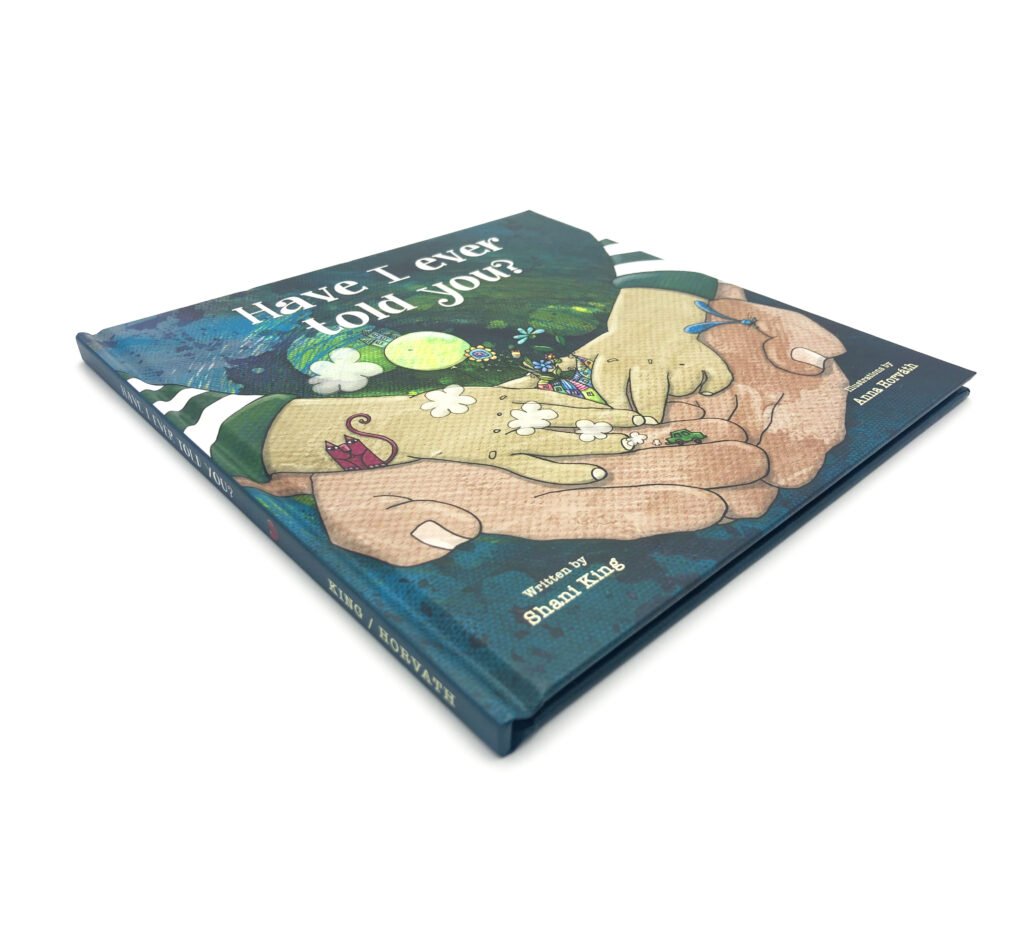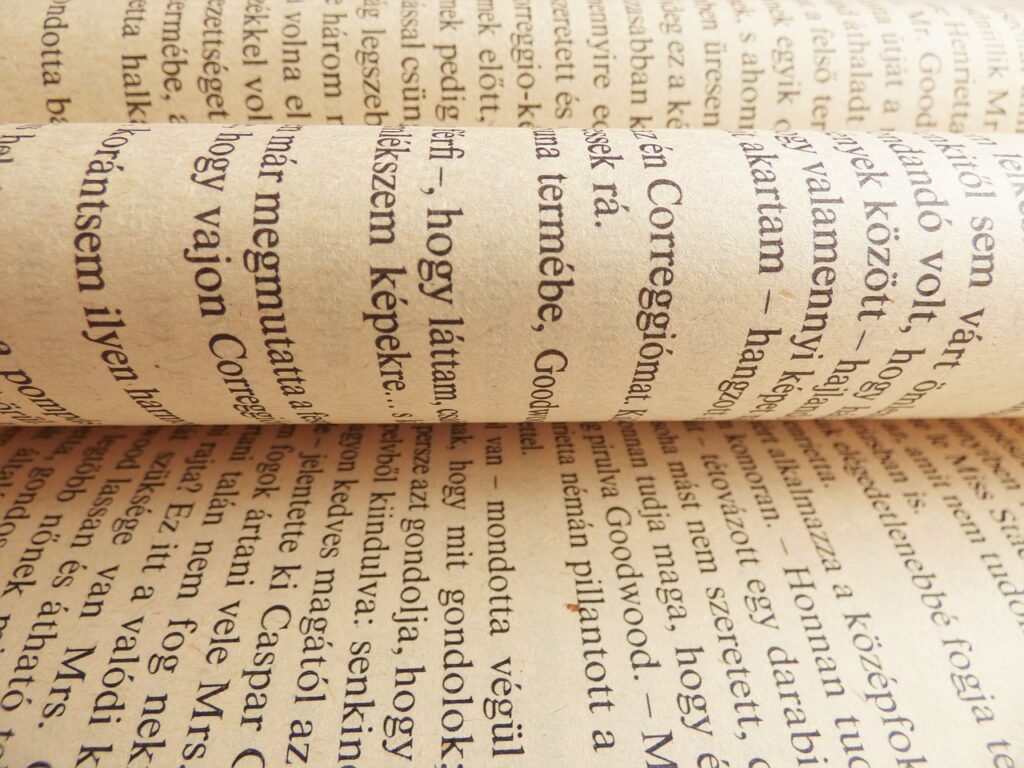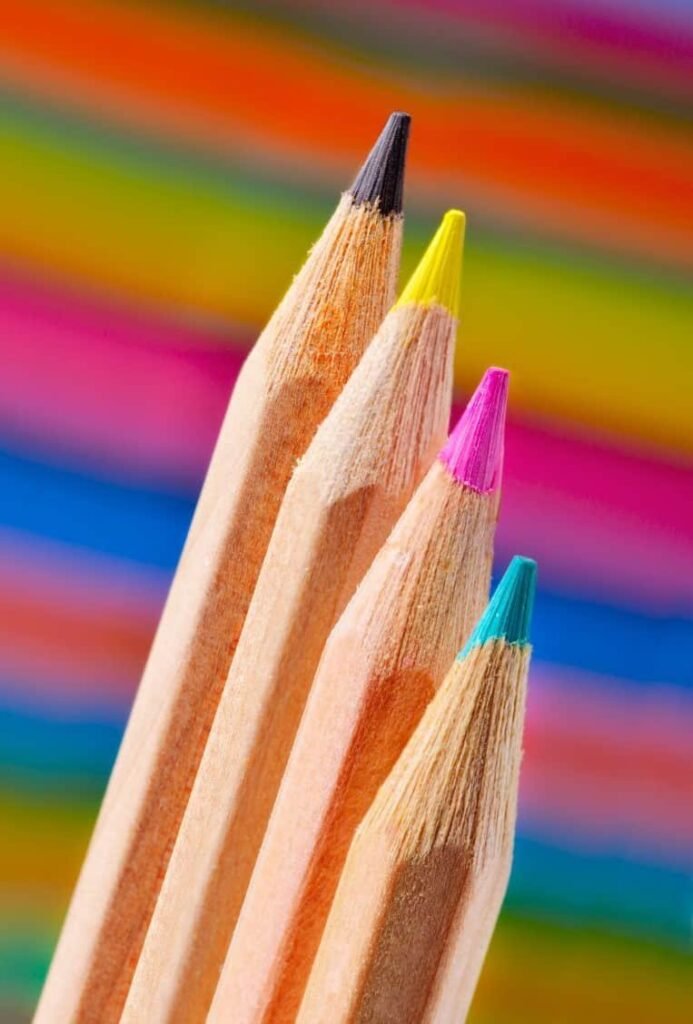You’ve penned down your masterpiece, and now you’re at a crossroads. The question looms: how should you bring your work to life? If you’re aiming for make your books excel at quality, durability, and a touch of class, hardcover book printing is your go-to option. It’s the Bentley of book formats, offering an unparalleled reading experience that no other types of books, and also any digital device of course, can compete with.
So, let’s delve deeper into the world of hardcover books, breaking down everything from materials, designing to binding and finishing.
How Are Hardcover Books Bound?
The binding of a hardcover book is not just a technical process; it’s an art form that adds to the book’s longevity and aesthetic appeal. There are several methods and styles, each with its own set of advantages and considerations. Let’s delve into some of the key types:
Square Back vs Round Back
If you categorize the hardcover books with the shape of its spine, then we have square and round back books.
Square Back: This is the most common type of hardcover binding where the spine is flat and forms a 90-degree angle with the covers. It’s straightforward, cost-effective, and works well for most general-purpose books.

Round Back: In this style, the spine is rounded, giving the book a more traditional, old-world feel. It’s often used for thicker books as it allows them to lie flat more easily when opened. However, it can be a bit more expensive due to the additional labor involved.

Separate End vs Self-End
The hardcover books can also be categorized by the types of endpapers. Before diving into the types of endpapers, it’s worth noting what endpapers are. Endpapers are the sheets of paper that are glued to the inside covers of a hardcover book. They serve both functional and aesthetic purposes, acting as a hinge that holds the book block to the cover.
Separate End: Here, the endpapers are different from the text paper and are usually of higher quality. They are glued separately to the inside covers, providing a neat finish and additional durability. The separate end has eight pages (four pieces) of paper, four pages in front of text block and four pages after the main pages. In most cases, separate end use uncoated woodfree paper.
Self-End: In this case, the endpapers are the same as the text paper and are part of the book block itself. So the self-end paper will be calculated into the total number of pages of the text block. This is a more economical option but may not offer the same level of durability or aesthetic appeal.
Special Types: Quarter-Back & Bare Back
Quarter-Back: Quarter-back binding is a hybrid style where only a quarter of the book’s spine is covered with a different material, often leather or cloth, while the rest is covered with paper. It offers a unique, luxurious feel without the cost of fully covering the spine with premium material.

Bare Back: In this minimalist style, the spine is left uncovered, exposing the binding. This is often used for artistic or design-focused books where the binding itself is a feature.

Components That Contribute to Cost
The primary cost factors in hardcover book production include materials, printing, binding, surface treatments, and packaging. Each of these elements can significantly impact the overall cost, so choosing wisely is crucial.
Material Selection
The type of paper and cover materials you choose can make a significant difference in cost. Opting for standard paper types and cover materials can be more economical than going for specialized or custom options. At Huaxin Printing, we offer a variety of standard materials that are both cost-effective and high-quality.
Surface Treatment
Options like embossing, debossing, or foil stamping can add a touch of luxury to your book but come at a price. If you’re on a budget, consider simpler treatments like matte or gloss lamination, which can still provide a polished look without breaking the bank.
Standard Sizes
It’s totally understandable that you want your books to be unique, and a customized trim size could definitely help to bring extra uniqueness. But bear in mind that such uniqueness could also come with additional costs for customization and paper cutting. Most printing companies, including Huaxin, can readily provide standard paper sizes. Opting for these can save you the cost of custom sizing and paper cutting.
Quantity Dictates Price
The rule of thumb in printing is simple: the higher the quantity, the lower the unit cost. Bulk orders can significantly reduce the overall cost per book. However, if you’re looking to print a small quantity, say fewer than 200 copies, we recommend digital printing as a cost-effective alternative.
By carefully considering these factors, you can make informed decisions that balance quality and cost. After all, a well-made hardcover book doesn’t have to break the bank. At Huaxin Printing, we’re here to guide you through these choices, ensuring you get the best value for your investment.
What Are the Pros & Cons of Hardcover Books?
Understanding the pros and cons of hardcover books is crucial for making an informed decision. While hardcovers offer unparalleled durability and aesthetic value, they also come with a higher price tag and considerations around weight and space. Let’s dive deeper into these aspects.
Pros
- Durability: One of the most compelling advantages of hardcover books is their durability. The robust cover and quality binding techniques ensure that hardcover books can withstand wear and tear, making it a long-lasting investment. This is particularly beneficial for libraries, educational institutions, and anyone looking to preserve a book for an extended period.
- Aesthetic Appeal: No doubt, hardcover books have its special elegance that no other books can compete with. Whether it’s sitting on a bookshelf or being presented as a gift, the hardcover format adds a level of sophistication that paperbacks often can’t match. The options for customization, such as embossing, foil stamping, or special surface treatments, further enhance its visual appeal.

- Resale Value: Hardcover books generally maintain a higher resale value compared to their paperback counterparts. This is especially true for first editions or special releases, which can become collectors’ items. The durability and aesthetic qualities contribute to maintaining the book’s condition, making it more appealing in the resale market.
Cons
- Higher Cost: One of the most immediate drawbacks of hardcover books is their higher production and retail cost. The quality materials and more labor-intensive binding processes drive up the price, making them less accessible for budget-sensitive readers or publishers. While the investment may pay off in the long run through durability and resale value, the initial cost can be a significant barrier for many.
- Portability and Weight: Hardcover books are generally heavier and bulkier than their paperback counterparts, making them less convenient for on-the-go reading. Whether you’re commuting, traveling, or simply like to read in different locations, the added weight and size can be cumbersome. This can be a particular concern for students or professionals who need to carry multiple books.
- Storage Space: The robust construction of hardcover books, while an advantage in terms of durability, also means they take up more shelf space. For avid readers with extensive collections or libraries with limited real estate, this can pose a challenge. The thicker spine and larger dimensions require more room, which might necessitate additional shelving or storage solutions.
What Types of materials Fit Well for Hardcover Books?
When it comes to hardcover books, the choice of materials plays a pivotal role in determining both quality and cost. From the type of paper used for the interior pages to the materials for the cover and spine, each component contributes to the book’s durability, appearance, and overall feel.
Text Paper: Coated vs Uncoated
When it comes to the text block, both coated and uncoated paper options are available. Coated paper offers a smooth finish and is ideal for books that require high-quality image reproduction, such as art books or coffee table editions. Uncoated paper, on the other hand, is more porous and offers a more natural, textured feel. It’s often used for novels or academic texts where image quality is not the primary concern. The choice between coated and uncoated paper can significantly impact both the look and feel of the book.

Grey Board
The grey board, typically 3mm thick (approximately 0.12 inches for those using the imperial system), serves as the backbone of a hardcover book. This material provides the rigidity and durability that hardcovers are known for. It’s essential to choose a grey board of high quality to ensure the book’s longevity and resistance to warping over time.
Cover Paper: PLC and More
PLC, or Printed Laminated Cover, usually employs 128gsm glossy art paper. This type of cover paper is popular for its vibrant color reproduction and its ability to withstand wear and tear. However, your options for cover don’t end there. Special papers of various textures, as well as imitation cloth materials, can also be used to create a unique tactile experience for the reader.
Lamination
Lamination adds an extra layer of protection and aesthetic appeal to the cover. Options include matt, gloss, soft-touch, and scuff-resistant types. Matt offers a subdued, elegant look, while gloss makes colors pop. Soft-touch provides a velvety feel, and scuff-resistant is ideal for books that will see a lot of handling.

H/T Band
Head and Tail bands, commonly known as H/T bands, are decorative strips placed at the top and bottom of a book’s spine to enhance aesthetic appeal and durability. The H/T band come in various styles and can be selected from a printer’s catalog. These bands are not just decorative; they also provide additional reinforcement to the book’s binding, enhancing its durability.

Foiling
Foiling is another decorative option that adds a metallic or pigmented flair to your book cover. Like H/T bands, a variety of foiling options can be found in a printer’s catalog. Foiling can be used for text, designs, or to outline images, adding a premium touch to the book.
Ribbons and Elastic Bands
These functional yet stylish additions can also be customized. Ribbons serve as built-in bookmarks, while elastic bands help keep the book closed when not in use. As with other customizable features, a range of options can be found in a printer’s catalog.
Choosing the right materials and finishes can make all the difference in creating a hardcover book that is both beautiful and durable. At Huaxin Printing, we offer a wide range of options to meet your specific needs.
How to Design the Template of the Cover?
Designing a hardcover is not just about slapping on a title and an image. You need to consider the spine width, which depends on the number of pages and the type of paper used. Don’t forget about the back cover, which can include a synopsis, author bio, and ISBN. Software like Adobe InDesign is commonly used for this purpose. Below is the sample of a hardcover book cover template.

We create hardcover books by enveloping grey board, typically 3 mm in thickness, with a printed paper cover.
When preparing the design for a hardcover, always remember to allocate additional room for the wraparound. This extra area functions similarly to what is known in the industry as ‘bleed.’ This means that both the front and back cover images should span the entire wraparound area. To determine the total width of a hardcover’s cover, you’ll need to sum up the left and right wraparound spaces, the back cover, the rear groove, the spine, the front groove, and the front cover. To figure out the cover’s height, add the top and bottom wraparound spaces to the book’s height.
The grooves along the spine typically measure 0.39 inches (or 10 mm). If you’re placing text or graphics at the center of the book cover, make sure to verify that they don’t overlap with the groove.
Conclusion
Hardcover book printing is not just a choice; it’s a statement of quality, durability, and class. It’s an investment in your work that pays off in the long run. With options for customization and a variety of paper types to choose from, hardcovers offer a premium product that stands the test of time.
So, if you’re looking to immortalize your next literary masterpiece or a timeless classic, the hardcover route is the way to go. At Huaxin Printing, we’ve been mastering this craft for 35 years, and we’re here to bring your vision to life.
About Huaxin Printing
Huaxin Printing, with 35 years of experience in book printing, provides authors and publishers globally the professional advice and manufacturing service of paper selection, layout design, color printing, and bookbinding service. Our clients include Trusted Media Brands, Lonely Planet, Mayo Clinic Press, Les Edition de Saxe, and most major art book publishers in China.




